Voices For Animals Over The Years: Jonathan Balcombe
Posted on August 21, 2021
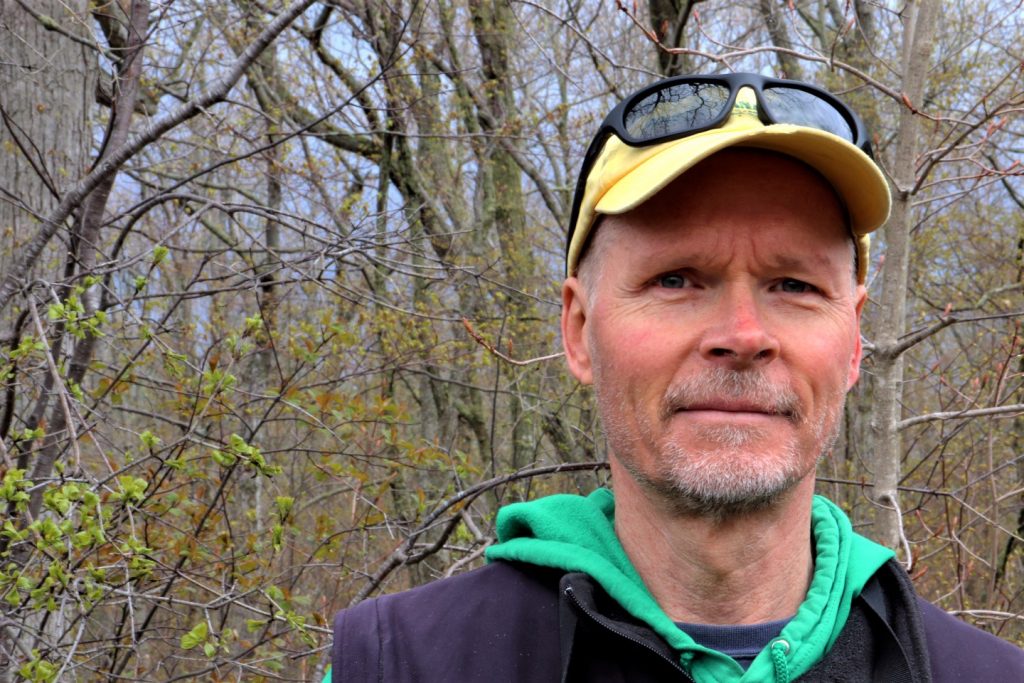
Vegan Ethologist and Author Jonathan Balcombe’s books have changed the way we look at other creatures such as fishes and flies. In this article Jonathan answers End Animal Slaughter‘s questions about his love for all animals, and his groundbreaking work on their outer and inner lives.
Q1 Tell us about your early years. I see you lived in New Zealand. What did you do here?
My family moved to Auckland, for the sheer adventure of it, when I was three and we sailed to Canada five years later. We travelled by ocean liner (six weeks), and I remember petting a kangaroo under a tree during a stop in Australia en route. New Zealand, with its mild climate and proximity to the ocean, was a lovely place to spend my early formative years.

Q2 Have you always loved animals? Was this what led you to become a biologist?
From my earliest memory I’ve loved all animals. To me it is entirely natural and normal to perceive other animals as other beings, equally involved in their precious lives as I am in mine. It follows that to do another animal harm is completely alien and repugnant to me, and I remember feeling far more estranged from any child who squashed bugs under their shoes than from the poor creature they were killing. My decision much later to study biology was a direct outgrowth of my strong feelings for animals.
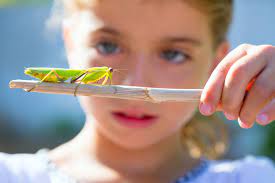
‘I remember feeling far more estranged from any child who squashed bugs under their shoes than from the poor creature they were killing.’
Q3 What is your position on the sentience of animals? Is all animal life sentient?
There is a pattern in scientific discovery that the more we come to know about an animal, the more complex and sophisticated we find it to be. It is hard to imagine that not long ago we thought we were the only tool-users, the only species with emotions, the only one to communicate with symbols, the only one with a personality and self-awareness, and so on. And so while I’m open to the possibility that some “simple” animals—sponges, or jellyfishes, perhaps?—might lack sentience (the capacity to feel), the idea seems increasingly doubtful. Regardless, I believe it is good policy to follow a version of the “precautionary principal,” which in this case assumes that all animals are sentient unless science compellingly indicates otherwise.
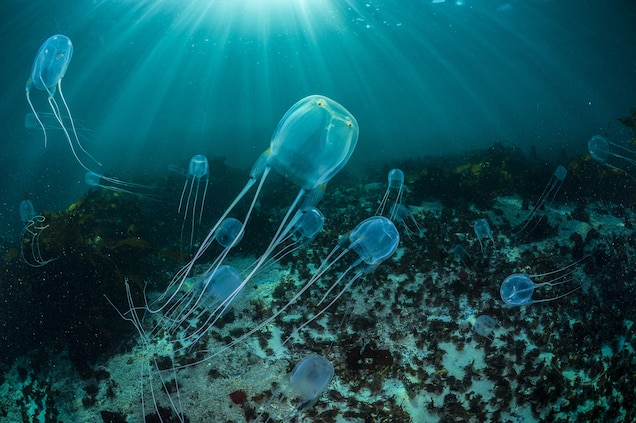
Image of Jellyfish: National Geographic
‘It is good policy to follow a version of the “precautionary principal,” which in this case assumes that all animals are sentient unless science compellingly indicates otherwise’.
Q4 Can you share with our readers some stories that show animal sentience and emotions?
In my last two books I have synthesized discoveries for two often demeaned and maligned groups of animals: fishes and insects. Examples include: referential signaling (fishes), observational learning (both fishes and insects), mental mapping (fishes), face recognition (both), mirror self-recognition (both), inferential reasoning (both), problem solving (both), and tool-use (both). Fishes are clearly emotional, and while there is less evidence for insects (maybe because we haven’t been looking for it), insects share with us biochemical pathways such as a dopamine system implicated in pleasurable feelings, and they respond in ways that suggest fear, arousal, and anger, for instance.
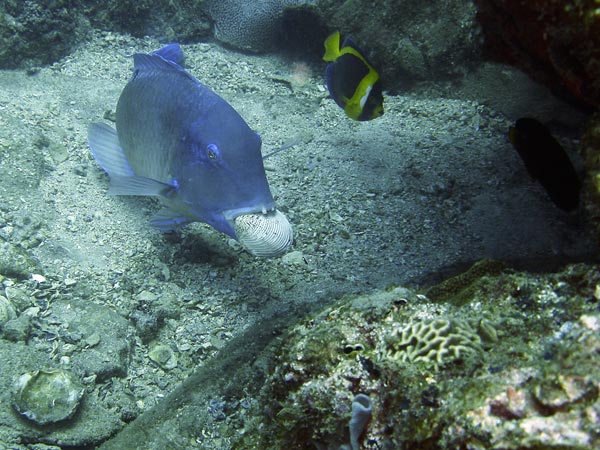
Blackspot tuskfish on The Great Barrier Reef. The fish repeatedly bash the shellfish against rocks to get to the edibles inside.
Q5 Is there any inherent distinction between wild animals, and animals that have been our companions for thousands of years, for example dogs?
There is no inherent distinction. Animals we have domesticated retain the same relevant anatomy and physiology as their wild ancestors. Behaviorally, however, there have been changes depending on the species and the context in which we keep them. Dogs have been shown to communicate with humans in ways that their wolf ancestors cannot. This makes evolutionary sense because dogs, unlike wolves, benefit from being acutely attuned to their human providers. For example, experiments at the Clever Dog Lab, in Vienna, show that, like us, dogs glance first (for just a few milliseconds) at the side of our faces that conveys more emotions. This unconscious behavior allows dogs (and us) to get a quick read of whether the person is, say, hostile or friendly. But since dogs’ faces don’t convey emotions in this asymmetrical manner, they don’t glance first at one side of another dog’s face. Nor do we.
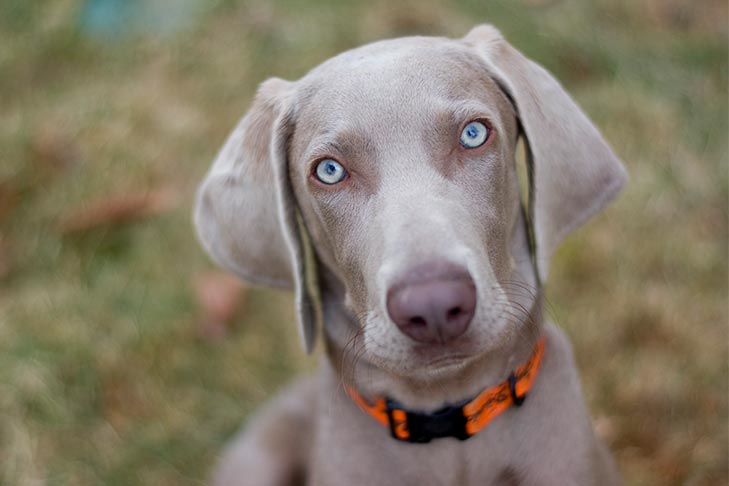
Q6 Are we much more like other animals than most of us care to admit? How?
Biologically, we are animals. And that’s much more significant than mere semantics. We literally share the same genetic, anatomical, and biochemical roots. And let’s be clear that humans are not some pinnacle of evolution—a high-point. We are another species of ape, one whose evolutionary trajectory happened to result in a big brain that in turn spawned fairly (though not entirely) unique emergent cultural phenomena such as art, technology, birthday cakes, and cigarettes.
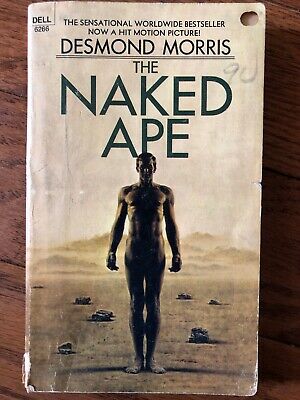
Evolutionary Biologist Desmond Morris’s ‘The Naked Ape’ struck a chord with the public when it was first published in 1967
Q7 You have written so many scholarly articles, and penned several books. One of your books that I would really like to read is ‘What A Fish Knows’. Are fish intelligent and sentient? What does a fish know, that we should know they know….
I mentioned some examples above, but here’s one that I find especially appealing and revealing. Fishes of several species have been shown to “fall” for the same optical illusions as we do. For example, if you teach a fish to select the larger of two circles (by touching it with her mouth or squirting water at it, for a food reward), then present the Ebbinghaus Illusion—in which one of two identical circles seems larger because of the arrangement of (smaller) dots surrounding it—and the trained fish will choose the circle that appears larger. To me this is a quite telling result. It illustrates that a fish can have beliefs, and that those beliefs are fallible. If the fish’s mind worked like an unthinking, unfeeling robot, it would perceive the two circles as equal. Another example illustrating the sharpness of a fish’s mind is the remarkable bird-hunting behavior shown by certain fishes. In freshwater lakes of southern Africa, predatory tigerfishes have learned to catch swallows by leaping from behind and snagging the birds in mid-air. If you know swallows then you’ll know that they are fast, erratic fliers (they need to be to catch their flying insect prey). Not only does the tigerfish behavior require impressive athleticism and coordination, it also requires planning. Catfishes in French rivers also show clever planning when they carefully stalk and ambush pigeons bathing and drinking in the shallows.
‘An example illustrating the sharpness of a fish’s mind is the remarkable bird-hunting behavior shown by certain fishes.’
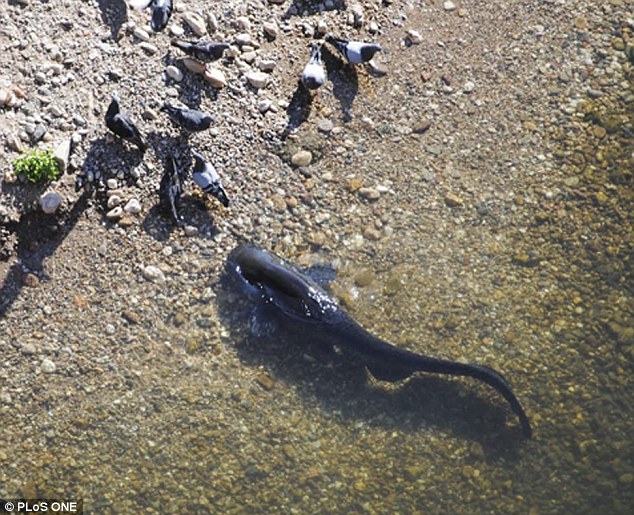
Catfish waiting for pigeons to get close enough to catch them.
Q8 Your latest book: ‘Super Fly. The unexpected Lives Of The World’s Most Successful Insects’ sounds fascinating. Why are Diptera so awesome?
Here are just a few of many reasons. Flies belong to the most successful group of animals on the planet, the insects, which make up 80 percent of all animal species living today. At 160,000 described species, and probably around five times that many still undiscovered, flies are probably the most diverse order of animals ever. Flies are also very fecund: in one year, a single pair of fruit flies could produce a dense ball of flies whose diameter stretches from here to the sun! (This calculation illustrates the importance of nature’s checks and balances.) Flies have an attention span, and they show rational decision-making, and deductive reasoning (A>B, B>C, thus A>C). Flies have taught us more about genetics than any other animal. Their maggots are the stars of the growing field of forensic entomology, helping to solve murders and exonerate the wrongly accused. Fly maggots are also effective in healing stubborn wounds such as burns, severe bedsores, non-healing surgical wounds, diabetic foot ulcers, and bone infections. Flies’ colorful sex lives include serenades, dancing, foreplay, gift-giving, cannibalism, bizarre interlocking genitalia, and giant sperm. Flies also self-medicate, using alcohol (in fermenting fruit) as a toxic defence against parasitic wasps.
‘Flies’ colorful sex lives include serenades, dancing, foreplay, gift-giving, cannibalism, bizarre interlocking genitalia, and giant sperm. Flies also self-medicate, using alcohol (in fermenting fruit) as a toxic defence against parasitic wasps’.
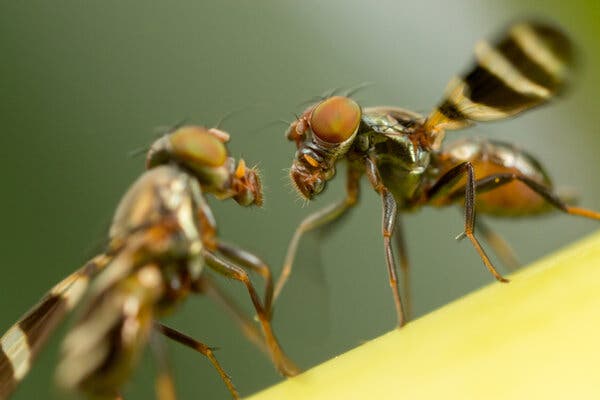
Flies have taught us more about genetics than any other animal.
Q9 Why do you think the majority of people continue to eat animals and their products, even when they are fully aware of what you and I would consider the cruelty and injustice of raising animals for food?
I think the main reasons are ignorance and economics. While many people may have a vague idea that meat production is not very nice for the animals, relatively few know, and fewer still wish to know, the ugly details of industrialized meat, dairy and egg production. And because most people enjoy the taste of these products, they don’t wish to be confronted with information that might conflict with their lifestyle. Unfortunately, there is a persistent and deep-seated misconception that plant-based foods are less palatable and rewarding than animal-based foods. This is why the rise of plant-based and lab-cultured meats and dairy products has the potential to be a game-changer in human dietary choices. But as long as these products cost more than the heavily-subsidized products of animal agriculture, large-scale change will be slow in coming.

Image of lab grown dairy products from Phys.Org
Q10 Is a vegan diet necessary for the future of our planet?
For most of the world, I believe a transition to plant-based eating is a critical component of the change that needs to happen. Animal agriculture uses about 83% of arable land to produce just 18% of the calories we consume as a species. Livestock today comprise a grotesque 60% of the vertebrate animal biomass on Earth, with humans making up 36% and wildlife a mere 4%. Anyone who thinks our meat habit isn’t a major if not the leading cause of the climate emergency, and current and future pandemics, is kidding themselves.
‘Anyone who thinks our meat habit isn’t a major if not the leading cause of the climate emergency, and current and future pandemics, is kidding themselves’.
Q 11 As well as your academic work and writing, do you do other forms of animal advocacy?
In addition to being a vegan, and an author, I share issues on social media, occasionally write a letter to the editor, donate to charities, sign petitions, and maintain an animal-friendly investment portfolio. I give around 15-20 presentations in a typical year, and I do lots of media and podcast interviews, especially in years when a book comes out.
Q12 How can we follow and support your work, and read your books?
My website is jonathan-balcombe.com, I have an author page on facebook, and I tweet occasionally. My books are widely available online, and most bookstores (and libraries) will acquire copies upon request.
Comments
Comments are closed.


Patricia Randolph says:
Hi- I wrote the Madravenspeak living wildlife column for The Capital Times newspaper, Madison, WI for 9 years as a pro bono project. 248 columns are archived on their web site. They ended it last year.
During the mass extinction of a million species ongoing ( half of the human-identified species on the planet), in this country, state and federal agencies who manage wildlife continue to fund it 90% on hunting and trapping licenses. They are maximum killing businesses that continue to recruit and retain more hunters and trappers with Pittman-Robertson taxes on guns and ammunition.
95% of citizens in the United States do not kill wildlife, yet we buy the billions of dollars of public lands that are prioritized as killing grounds. Wild horses and burros and bison are rounded up or just killed by hunters to graze cattle and sheep on our public lands.
I do not see the major organizations educating the public that if we democratized FUNDING – and demanded fair, proportionate participation ( I call it Fair Pay/Fair Say), we could protect our wolves, bears, bobcats, foxes, beavers and end the fur farm horrors.
This is not even considered by major older non-profit organizations like Nature “Conservancy” ( promotes hunting and trapping on 98% of its so-called conservancy), Sierra Club ( recruits kids into killing wildlife ) and Audubon Society ( you will never find them standing up for ducks, grouse, quail and other hunted birds). They are all heavily infiltrated by hunter membership money and will not go against their donors.
We are out of time to democratize wildlife governance. I wonder if you have any ideas on this?
Sandra Kyle says:
Thankyou for your marvellous advocacy for wildlife Patricia. I think Jonathan will read your comment and respond. But I would also invite you to write blogs for my website. Would you be interested in doing this, occasionally or regularly?
Patricia Randolph says:
Hi –
I just read this. I would be interested but need a breather while I attend to some long neglected personal projects and my house and property.
I think it is educate educate educate – but then after 9 years of writing the column, and adding in Action Alerts to give people ways to help ( an important addition ), everything is just getting worse.
So many crises – and animals are sacrificed to votes and politics and long entrenched special interest killing groups every time by both parties.
And the issues are so intertwined. The slaughterhouse mentality enables hunting mentality ( the “we eat animals so we are not against people who kill their own”) and the destruction of natural predators for farming the wild on agricultural models for deer and turkeys and other hunter preferred targets – is the destruction of keystone species and their balance to ecosystems.
What a tragedy…and it is late in this trajectory on all crisis levels.
Please keep my email address in your sources and check back with me in six months if I do not get back to you.
Thanks for asking.
My comment was to invite collaborative thinking on a farm animal and wildlife manifesto of rights.
Are you familiar with the Declaration of the Rights of Mother Earth and All Beings? It was created in 2010 in Cochabamba, Bolivia when one of the climate conferences again failed. Particularly read through Article II:
https://www.therightsofnature.org/universal-declaration/ There is another version that was more clearly written as Article 3 in the original draft that was the Rights of All Beings – and clearly stated they should not be tortured or harmed by humans. We need a manifesto to lobby for that magnificent change in status of fellow mortals.
Sandra Kyle says:
Thankyou Patricia. I hope it all goes well while you attend to your neglected personal projects and house and property – I really should be doing the same!! 🙂 Yes, it is easy to become discouraged for those of us who have campaigning for many years for the animals. But there are some very hopeful signs, I think, and the animals need us to keep going regardless. Thankyou for the Rights of Nature Universal Declaration link, I have downloaded it for future use. xx